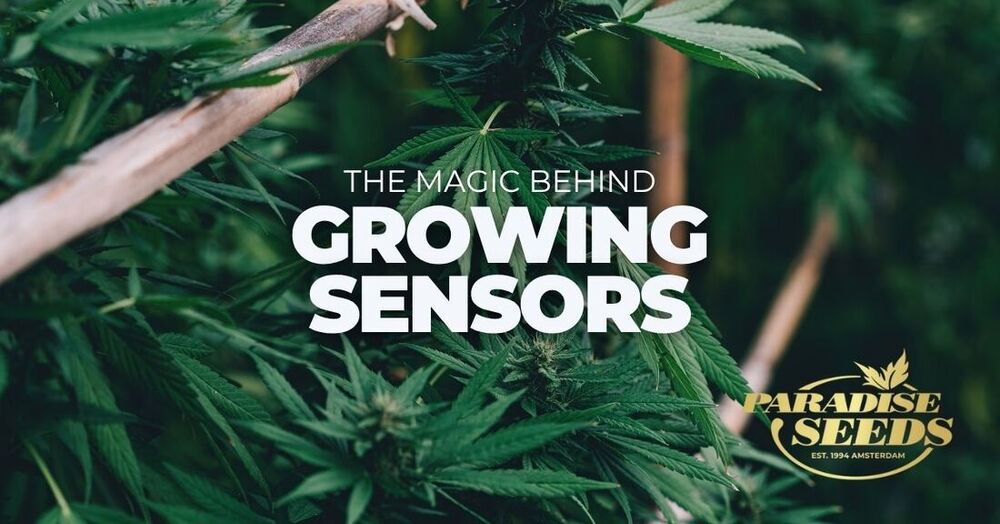Contents
As a companion to Sensor Options, this article takes a closer look at how different cannabis cultivation sensors work to measure temperature, humidity, pH, EC, light and soil environments within an indoor grow setup. It is intended to give growers a more detailed understanding of the sensor options available
Temperature Sensors
Temperature sensors are designed to detect and measure the ambient temperature in a growing environment. They convert thermal energy into a readable signal and transmit this information to growers through displays or control systems.
Types of Temperature Sensors
- Thermistors measure temperature by detecting changes in electrical resistance. As the temperature rises, the resistance in the thermistor varies, allowing the sensor to calculate the temperature accurately.
- Thermocouples generate a small voltage when two different metals are joined together. The voltage produced is directly related to the temperature difference between the two metals. By placing thermocouples at various locations within the grow room, growers can obtain real-time temperature readings, ensuring that conditions remain within the optimal range for cannabis growth.
- Infrared (IR) sensors are non-contact devices that measure the infrared radiation emitted by objects or surfaces. They are commonly used for monitoring the temperature of plant canopies.
How Temperature Sensors Are Used in Cannabis Cultivation:
Temperature sensors are essential for maintaining optimal growing conditions for plants, as they continuously monitor the ambient temperatures in the growing environment. When a sensor detects temperatures above or below a predetermined threshold, it can activate HVAC systems—such as heaters, coolers, or fans—to restore the ideal temperature.
Many modern temperature sensors also integrate with automated systems, enabling remote monitoring and adjustments through mobile apps or computer systems. This feature greatly improves operational efficiency.
Humidity Sensors
Humidity sensors measure the moisture content in the air, which is essential for healthy plant growth. The data from these sensors helps identify the specific humidity levels that are most beneficial for different mediums and growth phases.
Types of Humidity Sensors:
- Capacitive humidity sensors measure the moisture in the air by detecting changes in the dielectric constant of a polymer or oxide layer, which varies with humidity levels. These sensors can activate dehumidifiers, humidifiers, or ventilation systems as necessary to maintain the environment within the desired humidity range.
- Resistive humidity sensors use a moisture-sensitive material whose electrical resistance changes with humidity. As moisture levels increase, the resistance across the sensor alters, allowing for the calculation of humidity levels. Common materials for resistive sensors include salts and conductive polymers.
Generally, resistive cannabis cultivation sensors are less accurate than capacitive ones, especially at extreme humidity levels. They are also more susceptible to drift over time, requiring more frequent recalibration, and can be influenced by contaminants like dust and chemicals.
How Humidity Sensors Are Used in Cannabis Cultivation:
Maintaining the right humidity level is important for achieving the desired yield. High humidity can put your plants at risk of mold and other diseases, while low humidity can cause dehydration. Humidity sensors make it easy to find the optimal balance. They automate dehumidifiers or humidifiers based on real-time readings to ensure ideal conditions for your plants.
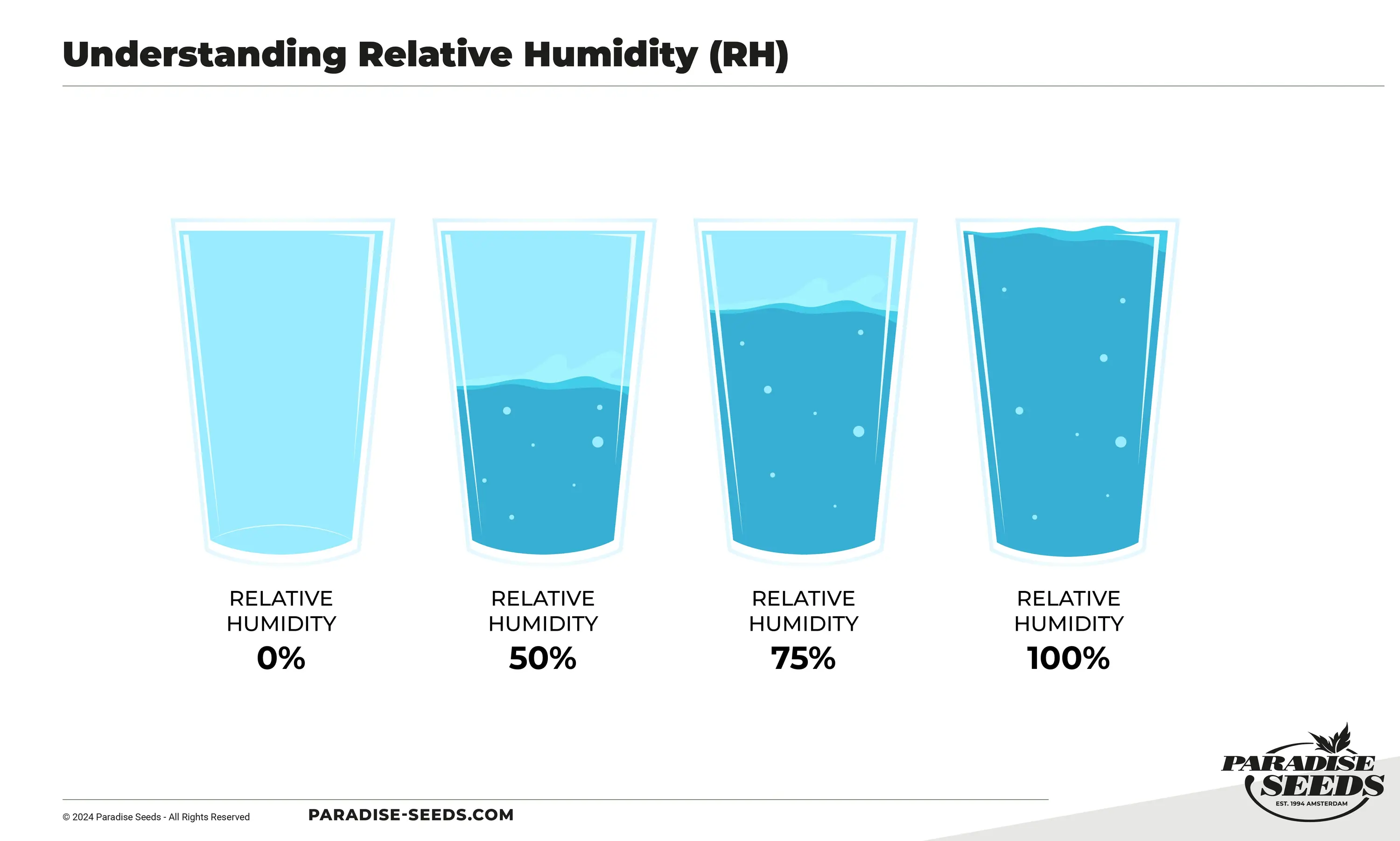
pH and EC Cannabis Cultivation Sensors
In cannabis cultivation, it is vital to monitor both pH levels and electrical conductivity (EC) to ensure optimal nutrient uptake and plant health. Various sensors are available, each designed to address specific growing needs.
Types of pH Sensors
- Manual pH meters require users to immerse a probe in the solution and manually record the reading. These devices need regular calibration with standard solutions, which can be time-consuming. While they are generally accurate within ±0.1 pH, their precision can vary based on user handling. Although manual meters are more affordable and accessible for hobbyists or smaller growers, they are best suited for occasional testing rather than continuous monitoring.
- Digital or continuous pH meters, on the other hand, provide instant readings on a digital display and can be left in a solution for ongoing monitoring. Many modern digital meters feature automatic calibration, which simplifies the process of maintaining accuracy. They often offer higher precision, sometimes up to ±0.01 pH, which is helpful in maintaining optimal growing conditions. While these meters are typically more expensive due to their advanced features, they are ideal for professional growers who require consistent monitoring and real-time data.
Types of EC Sensors:
Portable EC meters are compact and easy to use, making them perfect for growers who need to test nutrient solutions or soil conditions in various locations. These meters typically have a digital display for easy reading and are often waterproof, which adds to their durability in different environments. They provide quick and accurate readings, allowing growers to adjust their nutrient delivery promptly.
Continuous EC probes are designed for more advanced setups, especially in hydroponic systems. These probes can be left submerged in nutrient solutions to provide real-time monitoring of EC levels. They often connect to a digital display or controller, enabling growers to continuously track changes and make immediate adjustments as needed to maintain optimal nutrient concentrations.
Multifunctional pH & EC meters
Multifunctional or combo pH & EC meters combine pH and EC measurement with other important parameters such as total dissolved solids (TDS), and temperature. This versatility allows growers to monitor multiple aspects of their growing environment simultaneously, making it easier to manage nutrient solutions effectively.
How pH & EC Sensors Are Used in Cannabis Cultivation:
Monitoring pH and electrical conductivity (EC) is vital for optimizing nutrient uptake and ensuring healthy plant growth. These sensors provide valuable data that helps make informed irrigation and nutrient management decisions.
Soil Moisture Sensors
Soil moisture sensors measure the water content in the soil, helping growers determine the optimal times for irrigation.
Types of Soil Moisture Sensors
- Capacitive Soil Moisture Sensors measure the dielectric constant of the soil, which correlates with its moisture content. These sensors are typically placed into the substrate and provide continuous readings, enabling growers to monitor moisture levels in real time. They are recognized for their durability and resistance to corrosion, making them suitable for long-term use in various growing environments.
- Resistive Soil Moisture Sensors work by measuring the electrical resistance between two electrodes placed in the soil. As the moisture levels change, so does the resistance, which indicates the soil’s wetness. Although these sensors are typically less expensive, they can be influenced by soil salinity and may need more frequent calibration to ensure accuracy.
- TDR (Time Domain Reflectometry) Sensors use a time-based measurement technique to determine soil moisture levels. They send a pulse through the soil and measure the time it takes for the signal to return. This method provides highly accurate readings and is less affected by soil salinity compared to resistive sensors. While TDR sensors are commonly used in research settings, they are increasingly being adopted in commercial cultivation due to their precision.
- Granular Matrix Sensors are made of a porous material that absorbs water from the surrounding soil. These sensors measure the tension or matric potential of water in the soil, offering insights into how easily plants can access moisture. They are especially valuable for understanding water availability in different substrates and can assist growers in adjusting their irrigation practices accordingly.
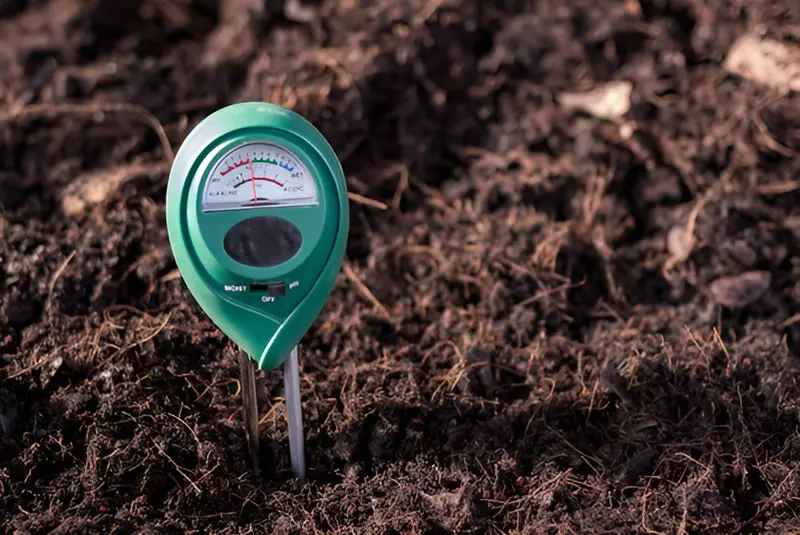
How Soil Moisture Sensors Are Used in Cannabis Cultivation
Soil moisture sensors provide critical data on water content in the growing medium. By monitoring moisture levels, growers can optimize irrigation practices, prevent overwatering or underwatering, and promote healthy plant development.
Light Sensors (PAR/PPFD)
Light sensors allow the grower to fine-tune the intensity of light available to cannabis plants. This ensures a more ideal level of photosynthesis, resulting in stronger plants and higher yields.
Types of PAR/PPFD Sensors
- PAR Sensors measure the amount of light available for photosynthesis within the wavelength range of 400 to 700 nanometers. These sensors provide valuable data on the light intensity that plants receive, allowing growers to adjust their lighting systems to meet the specific needs of their cannabis plants. By monitoring PAR levels, cultivators can ensure that their plants receive sufficient light during both the vegetative and flowering stages, promoting healthy growth and maximizing yields.
- PPFD Sensors quantify the number of photons in the PAR range that reach a specific area per second. This measurement is usually expressed in micromoles per square meter per second (μmol/m²/s). Understanding PPFD is crucial for determining how much usable light is available to plants at different heights within the grow area. With PPFD sensors, growers can identify areas that may have insufficient lighting and make necessary adjustments to their lighting setups, such as repositioning lights or adding extra fixtures.
- Multifunctional light sensors measure both PAR (Photosynthetically Active Radiation) and PPFD (Photosynthetic Photon Flux Density) alongside other environmental factors like temperature and humidity. These devices offer a comprehensive overview of the growing environment, enabling growers to make informed decisions about lighting adjustments based on real-time data. This integration optimizes plant health and energy efficiency by ensuring that lighting conditions are tailored to the specific growth stage of the cannabis plants.
See this article to learn more about how PAR and photons can boost the efficiency of LED lighting.
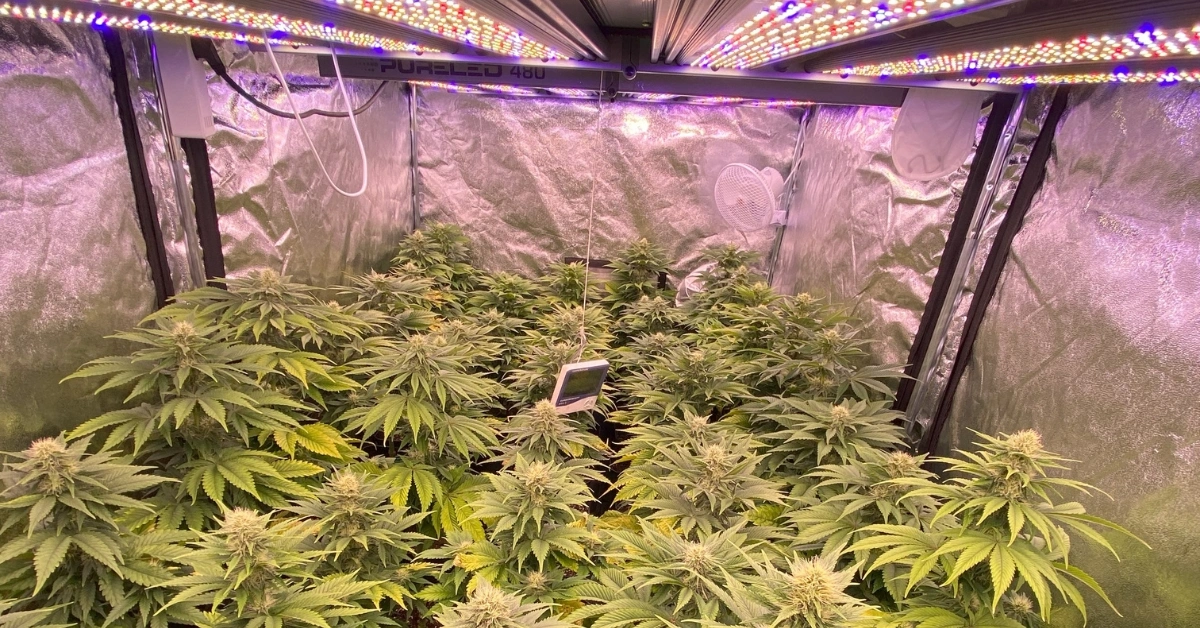
How PAR/PPFD Sensors Are Used in Cannabis Cultivation
Light sensors help in optimizing growth by measuring light intensity and quality. The two primary metrics that growers focus on are Photosynthetically Active Radiation (PAR) and Photosynthetic Photon Flux Density (PPFD), both of which are essential for ensuring that plants receive the appropriate light for photosynthesis.
CO2 Sensors
CO2 sensors measure the carbon dioxide levels in the grow environment, which are essential for plant photosynthesis.
Types of CO2 Sensors
NDIR (Non-Dispersive Infrared) Sensors are known for their accuracy in measuring CO2 levels. These sensors work by passing infrared light through the air sample; CO2 molecules absorb specific wavelengths of this light, allowing the sensor to calculate the concentration of CO2 present. NDIR sensors are often used in both small-scale and large-scale cannabis operations due to their precision and ability to provide real-time data.
Electrochemical Sensors, on the other hand, measure CO2 levels through a chemical reaction. When CO2 interacts with the sensor’s electrolyte, it generates a current proportional to the concentration of CO2. Although electrochemical sensors are generally less expensive than NDIR sensors, they may require more frequent calibration and maintenance to ensure their accuracy. These sensors are suitable for smaller operations or can be used as supplementary devices in larger setups.
Modular CO2 Monitoring Systems can support multiple CO2 sensors and alarm units, ensuring comprehensive coverage for larger cultivation facilities. These scalable systems allow growers to enhance their monitoring capabilities as their operations expand. With customizable alarm setpoints and integration with other environmental controls, modular systems help maintain safe and effective growing conditions.
Portable CO2 Meters are handy for quick checks of CO2 levels in different parts of the grow area. These handheld devices make it easy for growers to monitor air quality and ensure proper ventilation. While they do not provide constant monitoring, portable meters are useful for regular checks.
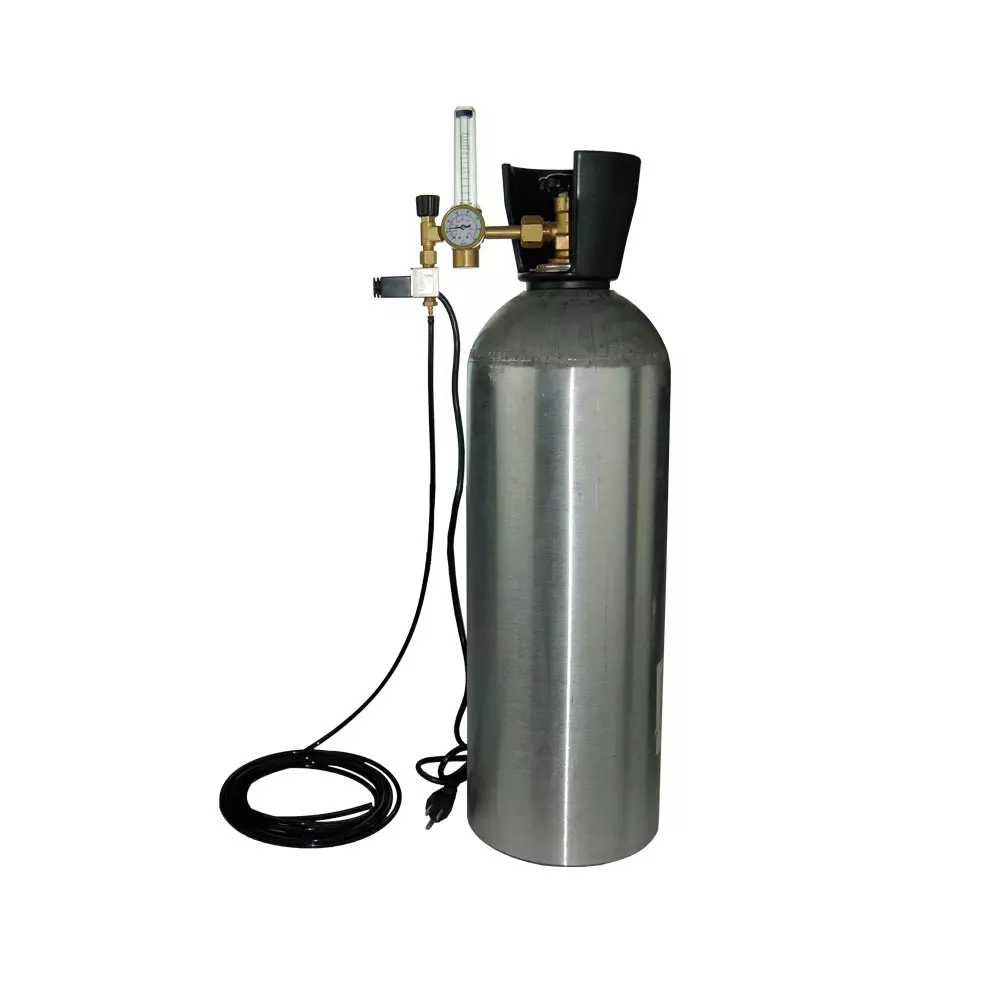
How CO2 Sensors Are Used in Cannabis Cultivation
Monitoring carbon dioxide (CO2) levels is another useful factor for optimizing plant growth and maximizing yields. CO2 sensors provide essential data that helps growers maintain appropriate levels, enhancing photosynthesis and overall plant health.
Conclusion
The use of cannabis cultivation sensors brings significant benefits for growers in terms of flagging up potential issues and increasing crop yield and quality. Sensor implementation is standard in commercial cannabis crop growing with huge levels of investment and sophistication of technology.
Using sensors has become increasingly popular amongst home growers too for the extra levels of management and descreasing risk in the grow space. As the price of tech comes down and the options for different types of sensors increase, what was once a niche ‘nice to have’, has become a ‘must have’ grow room addition for producing top quality cannabis flower.



